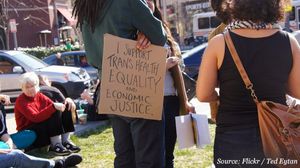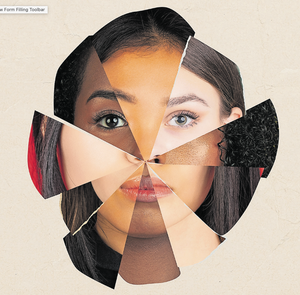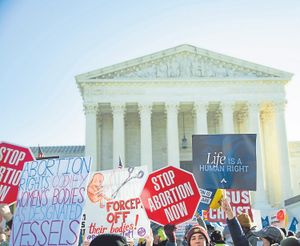No one can ignore the current demands for ‘transsexual rights’. Both the UK and Scottish governments are considering proposals to make ‘changing sex’ as easy as buying a TV licence.
Our instinctive reaction may be to assume that the demand for ‘transsexual (or transgender) rights’ is mainly about protecting a tiny minority of troubled people from unfair discrimination.
But, in reality, the underlying ideology of ‘gender identity’ is toxic. Ultimately, it aims to legally eliminate male and female sex distinctions.
This ideology is now promoted in primary schools. The Gender Fairy, a story written for four-year-olds, says: ‘Only you know whether you are a boy or a girl. No one can tell you’.
The author hopes that this book will mean that ‘Some children will realise their true identity is not the gender they were assigned at birth, and will choose to make a social transition to live as their true gender’.
Throughout history there have been cases of (mostly) men who cross-dress for erotic stimulation, sometimes known as transvestites (the word was first coined in 1910). This condition is not to be equated with transsexualism.
Nor should homosexuality be confused with transsexualism. And the exceedingly rare biological intersex conditions are not to be confused with transsexualism either.
Transsexuals are people who are biologically male or female (not intersex) but who believe themselves to be members of the opposite sex. What causes this condition?
Dr Peter Saunders, formerly of the Christian Medical Fellowship in the UK writes: ‘The mechanisms leading to transsexuality are incompletely understood but genetic, neurodevelopmental and psychosocial factors probably all contribute.
‘Various theories exist and, as in the debate about homosexuality, their proponents tend to favour either nature (biology) or nurture (upbringing) … It may well be that the causes are multifactorial and the combinations come from both nature and nurture’.
How common is this condition? ‘Gender Recognition Certificates’ are the mechanism in the United Kingdom for someone changing their legal sex. According to the most recent figures, just over 4,500 have been granted since 2005.
True gender dysphoria is very rare. In 2016, K J Zucker et al wrote in the Annual Review of Clinical Psychology that, although ‘estimates vary widely’, ‘prevalence studies conclude that fewer than 1 in 10,000 adult natal males and 1 in 30,000 adult natal females experience [gender dysphoria]’.
From the 1930s onwards, medical advances enabled doctors to ‘treat’ this condition by means of hormonal and surgical interventions. It is possible, using hormone treatments and surgery, to transform a man into someone who looks like a woman and vice versa.
The phrase ‘sex-change surgery’ is often used, but it is deceptive. No amount of surgery can truly change a man into a woman, or a woman into a man. But appearance can be changed quite effectively.
And names can be changed very easily. An increasing number of countries have legislated to enable a complete identity change, offering changes to birth certificates and other documentation.
Since the 1980s, as the cause of transsexuals has been taken up as the supposed last frontier of civil rights, there has been a deliberate conflation of those who have intersex conditions and those with other forms of what is described as ‘gender variance’, including the desire to cross-dress.
The umbrella term ‘transgender’ has come to be preferred as a way of including all the different ways people experience or live out their ‘gender identity’ when there is any felt incongruence with their biological sex.
The term transgender can imply an acceptance of ‘gender fluidity’ (the belief that it is inherently oppressive to divide people into two binary categories).
In fact, the notion of ‘gender fluidity’ is a direct contradiction of the idea of ‘transsexuality’ – which involves a change of identity from one ‘binary category’ to the other.
Where did all this come from? Certainly, some ideas around masculinity and femininity are socially constructed. And of course, different men and women have a multiplicity of different gifts, aptitudes, and preferences.
People do not all necessarily fit in with cultural stereotypes associated with masculinity and femininity at any given time. None of which proves that our fundamental understanding of humanity as male and female is socially constructed. But that is the central claim of gender theory.
Where and when did the concept of a division between ‘sex’ and ‘gender’ arise? Karl Heinrich Ulrichs (1825-1895) was a German doctor and campaigner for homosexual rights. He advanced the theory of ‘a female soul in a man’s body’ in order to argue the case that homosexuality was innate (and should not be penalised).
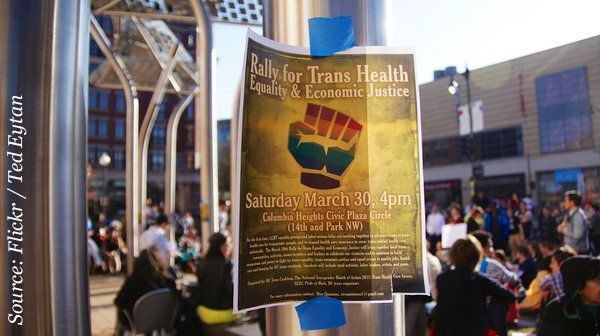
At this time, the phrase ‘sexual inversion’ was used by sexologists such as Havelock Ellis (1859-1939) to refer to homosexuals. Male ‘inverts’ were thought to have a ‘feminine soul in a male body’. This was the beginning of the idea that biological sex could be divided from the ‘gendered experience’.
During the twentieth century the notion of transsexualism gained ground. Alfred Kinsey (1894-1956), a professional sexual ‘researcher’, produced the Kinsey Reports, which many believe sparked off the ‘sexual revolution’. He aimed for the overthrow of all legislation which restricted sexual ‘freedom’.
He cooperated with Dr Harry Benjamin (1885-1986). Benjamin introduced the term ‘transsexual’ in 1953, and wrote a book on the subject in 1966.
He pioneered the idea that if someone was convinced they were living in the ‘wrong’ body, then the body should be ‘fixed’ to fit with what their mind said, rather than attempting to ‘change their mind’ to fit the biological facts.
He provided patients with hormone treatment, and recruited other medical colleagues to assist with surgery and other treatments.
One of Harry Benjamin’s colleagues was John Money (1921-2006). Like Kinsey and Benjamin, Money campaigned for the freedom to ‘change gender’. Money was the co-founder of the John Hopkins Gender Identity Clinic, and he hit the headlines in America in 1966 with a ground-breaking case of a ‘man who’d become a woman’.
Of course, ‘our sex is not a body part. It is inscribed into the DNA of every cell in our bodies’ and a male cannot be changed into a female. But Money was able to persuade many Americans that he’d managed to do just that.
His most famous alleged success story related to a little boy, David Reimer, whose circumcision had gone wrong. Money persuaded David’s parents to allow him to surgically change the child’s genitalia to make him appear female, and he instructed them to bring the child up as a little girl.
This did not end well. The child insisted, in the end, on affirming his true biological identity, but the systematic abuse received over many years from the doctor who was supposed to be caring for him meant that ultimately he committed suicide.
In 1968, Sex and Gender by Robert J Stoller was published, arguing that ‘sex’ is biological (what we are born as), and ‘gender’ is social (what we learn through socialisation).
By the 1970s, as the ideas of postmodernism gained ground, reality itself came to be regarded as ‘socially constructed’. What it meant to be male or female came to be seen as socially constructed as well.
Radical feminists challenged the ‘oppression’ of sex roles, and some, such as Judith Butler, began questioning any distinctions between male and female.
The transsexual cause underwent a setback during the 1970s. Dr Meyer and Professor Paul McHugh conducted a survey of 50 transsexuals who had been treated at the Johns Hopkins Gender Identity Clinic.
Professor McHugh had been the senior psychiatrist at Johns Hopkins. He explained that those who had undergone ‘sex reassignment’ surgery were little improved in their psychological condition afterwards.
He writes: ‘Hopkins was fundamentally cooperating with a mental illness. We psychiatrists, I thought, would do better to concentrate on trying to fix their minds and not their genitals’.
The Johns Hopkins Gender Identity Clinic stopped performing ‘sex reassignment’ operations, as did many university-based gender clinics, but surgeons continued to perform these operations elsewhere.
Up to relatively recently, the ideology of gender fluidity would have seemed remote and alien to most people. But around three years ago the media began to focus on this issue relentlessly.
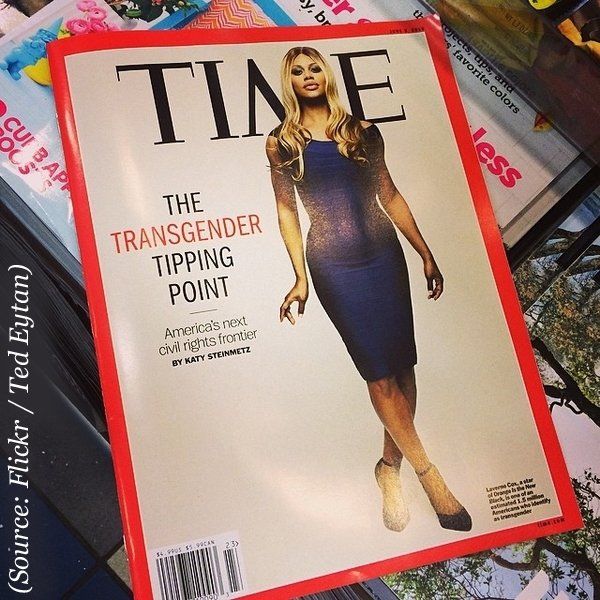
TIME magazine named 2014 as the ‘Transgender Tipping Point’, where an ideology that had been largely restricted to academic departments and LGBT campaign groups hit the headlines.
Family campaigner and academic Gabriele Kuby explains in The Global Sexual Revolution that this was no accident. She points out that the gay rights movement had long since moved beyond the aim of removing legal penalties from homosexual practice. They were determined to abolish ‘heteronormativity’; the very idea that the heterosexual union of man and woman is ‘normal’.
As most people choose freely to live in heterosexual relationships, this would be an uphill task. In order to destroy the idea that these relationships are natural it would be necessary to capture the hearts and minds of children and adolescents, who are highly impressionable.
Hence the drive to promote the false notion of gender fluidity among young people, whether by means of sex education or in the guise of ‘anti-bullying’ programmes, or through entertainment and social media.
Many adults feel instinctively uneasy about this, but they are frightened to speak out, intimidated by the claim that objecting to gender fluidity implies ‘discrimination’ against transgender people.
Kuby’s book also explains the global influence of the Yogyakarta Principles — a set of ‘human rights’ demands laid out by the delegates at a conference in Indonesia in 2006, and published in Geneva in 2007.
The Principles listed the ways in which international human rights law should be applied to ‘sexual orientation and gender identity’. They were non-binding, but they are often referred to as ‘the gold standard’ for ‘equality’ legislation.
They define ‘gender identity’ like this: ‘Gender identity is understood to refer to each person’s deeply felt internal and individual experience of gender, which may or may not correspond with the sex assigned at birth, including the personal sense of the body (which may involve, if freely chosen, modification of bodily appearance or function by medical, surgical or other means) and other expressions of gender, including dress, speech and mannerisms [emphasis added]’.
Note that ‘gender identity’ is self-defined. It is claimed that everyone has the right to be accepted by others in the ‘gender identity’ they choose, based on their subjective sense of themselves, separate from connection with biological sex. Internal ‘experience’ trumps what is presented as the arbitrary ‘assignation’ of biological sex at birth.
Yet, a comprehensive survey of the scientific evidence, published in 2016 in The New Atlantis, concluded: ‘The hypothesis that gender identity is an innate, fixed property of human beings that is independent of biological sex — that a person might be ‘a man trapped in a woman’s body’ or ‘a woman trapped in a man’s body’ — is not supported by scientific evidence’.
This survey was co-authored by two leading scholars on mental health and sexuality, and discussed over 200 peer-reviewed studies in the biological, psychological, and social sciences.
Despite a lack of any scientific grounding, gender identity theory has become mainstream, and is increasingly being integrated into the legal and educational systems in a number of countries.
There is pressure on all of us to accept people on the basis of their ‘deeply-felt internal and individual experience’, and their ‘personal sense of the body’. This ‘deeply-felt experience’ becomes a sufficient reason to be awarded a change in legal status.
And there are demands for access to spaces designated as ‘women-only’ or ‘men-only’ for anyone who ‘identifies’ with that sex, regardless of their bodily attributes or appearance.
As of 2017, legislation allowing people to change legal sex has been passed in countries such as Japan, the United Kingdom, Ireland, Spain, Uruguay, Argentina, Denmark, Malta, Colombia, Iceland, Vietnam, Ecuador, Bolivia, Norway and France.
In such countries, a man can legally take a female name, be given a new birth certificate, and be treated for all legal purposes as a woman (or vice versa).
In some of these countries, there is no requirement for such a person to undergo any medical treatment at all (such as hormonal treatment or surgical ‘reassignment’).
That means that a physically normal man can demand to be recognised as a woman with free access to all women-only facilities.
Whether or not countries have passed such laws, International Planned Parenthood Federation (IPPF) and the United Nations Population Fund (UNFPA) want children in all countries to receive ‘comprehensive sexuality education’ (CSE).
The United Nations puts pressure on member states to adopt CSE, and so children in some of the most socially conservative countries are exposed to teaching which tells them they have the right to experience ‘sexual pleasure’ whenever and however they wish (as long as the other person consents), and that they have the right to choose their own sexual orientation and ‘gender identity’.
Young people in many countries have been exposed to the central claim of gender ideology: that we are free to choose our own ‘gender’. This idea is celebrated and romanticised in films, and promoted on social media.
But this idea directly contradicts biblical truth. Advocates of ‘transgender rights’ are aware of this, and want to silence the testimony of conservative Bible-teaching churches, using legislation that outlaws challenge to the trans agenda.
In Canada, Bill C-16 became law in June 2017. It adds ‘gender identity and gender expression’ to the list of ‘prohibited grounds’ of discrimination. That means that any questioning of a person’s claims to identify as the opposite sex will be classed as ‘hate speech’.
Penalties will be exacted from any who ‘mis-gender’ others, or who refuse to use ‘gender neutral’ pronouns. This poses an unprecedented challenge to freedom of speech and expression. It will directly impact churches and parents as they seek to teach the biblical truth: ‘male and female he created them’.
If you control the language you control the debate. Here are four words or phrases which are slippery and tendentious, and which we should resist using except in so far as we need to explain the views of others:
‘Gender identity’. Stonewall defines ‘gender identity’ in this way: ‘Everyone has a gender identity. This is the gender that someone feels they are. This might be the same as the gender they were given as a baby, but it might not. They might feel like they are a different gender, or they might not feel like a boy or a girl’.
There are plenty of non-Christians as well as Christians who recognise this as nonsense. For example, Rebecca Reilly-Cooper, non-Christian philosopher at Warwick University, responds: ‘If we take an individual’s self-declared gender identity as the sole necessary and sufficient condition for membership in a gender class, the result is that the meaning of the word ‘woman’ is reduced to a subjective mental state, to a feeling in a person’s head.
‘The only answer to the question ‘what is a woman?’ becomes ‘a person who feels like a woman’. But this is an entirely circular definition that tells us nothing about what a woman is’.
‘Assigned’ at birth. This phrase conjures up an image of a midwife maliciously and randomly putting a sinister label on an innocent infant.
Rebecca Reilly-Cooper comments: ‘Correctly identifying the genitals that a child possesses and therefore the biological sex to which they belong is not a matter of ‘assigning gender’ to the child; it is simply to recognise the biological facts and to give them the correct biological label’.
‘Transphobia’. An anti-bullying charity, Galop, defines ‘transphobia’ in this way: ‘Transphobia is an intolerance of people whose appearance or behaviour challenges gender expectations and norms. An example of a non-criminal expression of this is purposely using the wrong male or female pronouns to refer to trans people’.
Note that here ‘disagreement’ with gender identity theory is equated with ‘intolerance’ which is equated with ‘phobia’. The clear implication is that it is hateful, bigoted, even evil, to disagree with gender identity theory.
‘Cisgender’. Used to mean a non-transgendered person. American commentator Stella Morabito says: ‘Cisgender is a totally weaponized term that forces even more de-sexing in society. It’s also a pejorative term that is supposed to mean that your mind just so happens to allow your “assigned sex” to exist alongside your “gender identity”.’
God has put us here, in this culture, at this time, for such a time as this. Some evangelicals take the route of simply ‘preaching the gospel’ (defined in the narrowest possible way), and remaining silent over contentious issues.
But this means we will fail to protect children and young people from a dangerous lie, and that we will fail to engage with people who have been deceived by the claims of gender theory. We could refuse to engage with anyone with problems. But that is not Christ’s way.
In the coming days, this will be a ‘frontline’ issue for Bible-believing Christians. It may not be long before gendered speech (use of terms man/woman/boy/girl etc.) is regarded as hate speech. There may be pressure to censor sermons.
There will be resistance to teaching children God’s design for men and women. There will be huge free speech implications. We need to be informed, wise, compassionate and courageous. Above all, we need to be prayerful.
Next month: 8 ways churches should respond to the transgender agenda
Dr Sharon James is a Christian author, speaker, and Social Policy Analyst at The Christian Institute. This article is an extract from a longer article first published by Reformation Today. The full article with accompanying reference notes is available on the RT website, reformation-today.org

